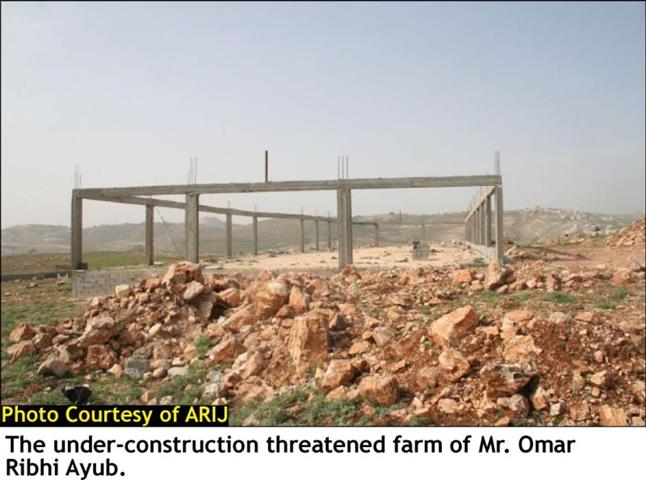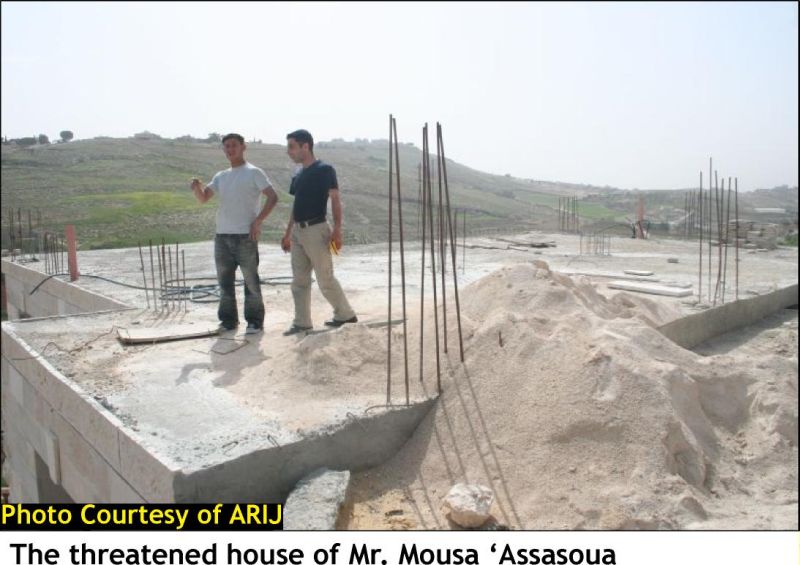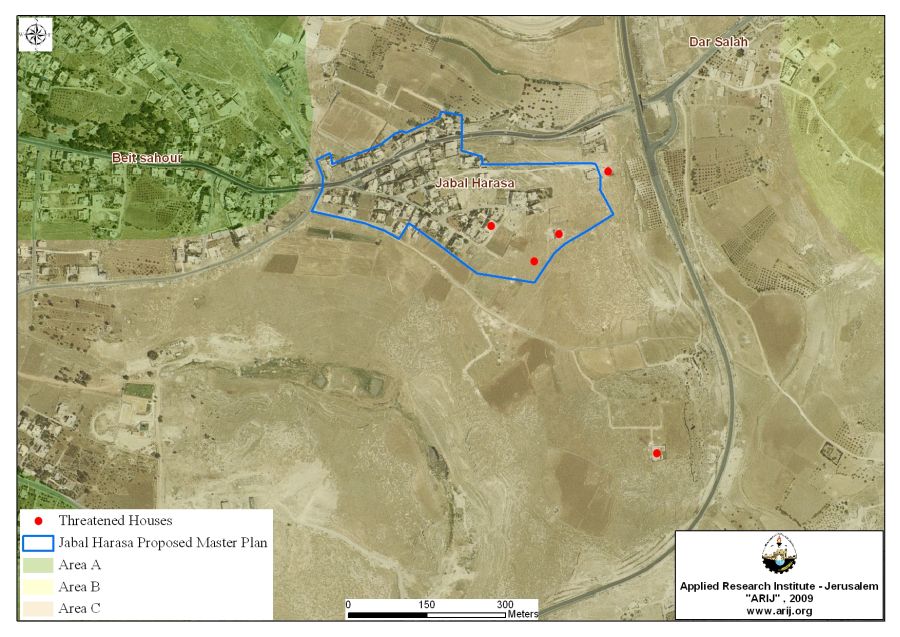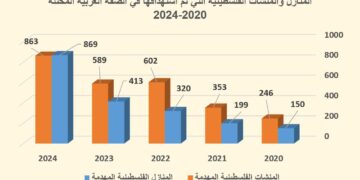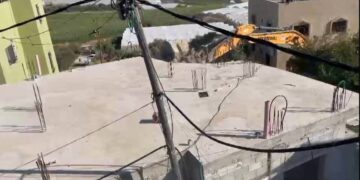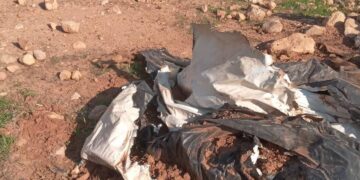On April 5, 2009, the Israeli Occupation Army along with the Israeli Civil Administration personnel stationed in Jabal Harasa area east of Beit Sahour city and handed over five Palestinian families’ military warnings to demolish their houses/structures under the pretext of lacking proper building permits.
The first threatened farm is owned by citizen Omar Ribhi Barhum Ayub and was built few months ago on a total land area of 1000 m2 (one dunum).
The second threatened house is owned by Mohammad Sa’eed Al Barmil and was built in the year 2007 and occupies a total land area of 350 m2. Mr. Sa’eed indicated to ARIJ field workers that he received an Israeli demolition order earlier in May 2008.
The third threatened house is owned by Mr. Fadi Jamal Bannourah. His 500 m2 house and four warehouses were built in the year 2007;
The fourth threatened house is owned by Mr. Ya’coub Mutawe’ and was built in the year 2007 with a total land area of 350 m2.

While the fifth house is owned by Mr. Mussa ‘Assasoua and was built in the year 2008.
See map of locations:-
Map 1: Location Map of the threatened houses in Jabal Harasa/Beit Sahour
Moreover, the Israeli civil administration forced Palestinian families to obtain building permits for their threatened structures especially those seeking to build houses outside the existing community boundary which was defined based on the regional outline plans approved in the 1940s during the British Mandate time; otherwise, these house will be considered as ‘illegally built’ and will be subjected to demolition by the Israeli civil Administration, even if they are built on privately owned land.
New Master Paln for Jabal Harsa
In 2008, the Israeli planning Department operating within the Israeli Civil Administration issued exclusive master plans for 13 Palestinian villages located in areas of the West Bank defined under the Oslo Accord of 1995 as areas ‘C’. This shift in the Israeli civil administration policy came due to an effective pressure from the international Quartet and the Office of its delegate Tony Blair. The villages are: Fazail North (Jericho), Rashida (Jericho), Khirbat a-Tih (Tulkarm), Brukin North (Qualqilya), Khirbat A-Tawani (Hebron), Khirbat A-Shama West (Hebron), Jabel Harsa (Bethlehem), A-Sheikh West (Bethlehem), Hermel (Bethlehem), Zabrat Kabira (Tulkarm), Adna east (Hebron), Tarkumiya South (Hebron), Khirbat Ta’anach (Jenin), and Khirbat Um Reihan (Jenin).
During the years of 2000 and 2007, there where 1890 submitted applications by Palestinians living in area “C” for building licenses to the Israeli civil administration, of which, only 105 (5.5%) building permits were approved. On the other hand, the Israeli civil administration demolished 1626 so-called illegal Palestinian structures built in area C within the same period. The table below shows a comparison between the proposed master plan areas and the standing built-up area in Jabal Harasa. The table also indicates the Built-up area outside the master plan:
Table 1: The proposed Master plan for Jabal Harsa – Beit Sahour
|
Master Plan Name
|
Proposed
Master plan Area / Dunum
|
Existing total Built-up Area/
Dunums
|
Built-up area inside the proposed master plan/
Dunums
|
Built-up area outside the proposed
master plan/
Dunums
|
|
Jabal Harasa
|
99
|
62
|
41
|
21
|
Source: ARIJ GIS Unit – 2009
To Conclude
The Israeli policy of demolishing Palestinian houses built in area ‘C’ aims primarily at emptying the Palestinian population from these areas ‘C’ and voluntarily evacuating them, while at the same time, expanding and intensifying building of Illegal Israeli settlements and outposts.
Under the Universal Declaration of Human Rights adopted and proclaimed by General Assembly resolution 217 A (III) of, December 10, 1948, Article 17 reads: ‘No one shall be arbitrarily deprived of his property.’ Which means it bans Israel from destroying or confiscating the property of the Palestinians at any case.
Also Article 53 & 147 of the Fourth Geneva Convention indicated that: Extensive destruction and appropriation of property not justified by military necessity and carried out unlawfully and wantonly, is a grave breach of the Convention.
Moreover, Art. 23 of the Hague Convention of 1907 also provides: In addition to the prohibitions provided by special Conventions, it is especially forbidden to destroy or seize the enemy’s property, unless such destruction or seizure be imperatively demanded by the necessities of war.
Prepared by


